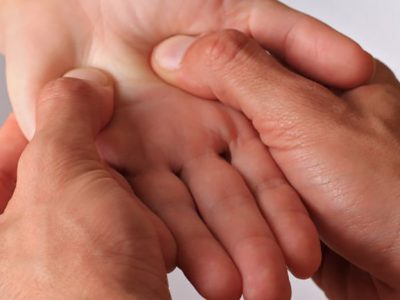There are four stages of sleep: Non-REM (NREM) sleep (Stages 1, 2 & 3) and REM sleep. Periods of wakefulness occur before and intermittently throughout the various sleep stages or as one shifts sleeping position. REM stands for rapid eye movement. During REM sleep, your eyes move quickly in different directions. That doesn’t happen during non-REM sleep. First comes non-REM sleep, followed by a shorter period of REM sleep, and then the cycle starts over again. Dreams typically happen during REM sleep.
Stage 1
Is the lightest stage of NREM sleep. Often defined by the presence of slow eye movements, this drowsy sleep stage can be easily disrupted causing awakenings or arousals. Muscle tone throughout the body relaxes and brain wave activity begins to slow from that of wake. Occasionally people may experience hypnic jerks or abrupt muscle spasms and may even experience sensation of falling while drifting in and out of Stage 1.
Stage 2
Is the first actual stage of defined NREM sleep. Awakenings or arousals do not occur as easily as in Stage 1 sleep and the slow moving eye rolls discontinue. Brain waves continue to slow with specific bursts of rapid activity known as sleep spindles intermixed with sleep structures known as K complexes. Both sleep spindles and K complexes are thought to serve as protection for the brain from awakening from sleep. Body temperature begins to decrease and heart rate begins to slow.
Stage 3
Is known as deep NREM sleep. The most restorative stage of sleep, stage 3 consists of delta waves or slow waves. Awakenings or arousals are rare and often it is difficult to awaken someone in Stage 3 sleep. Parasomnias (sleepwalking, sleep talking or somniloquy and night terrors) occur during the deepest stage of sleep.
REM sleep
Also known as rapid eye movement, is most commonly known as the dreaming stage. Eye movements are rapid, moving from side to side and brain waves are more active than in Stages 2 & 3 of sleep. Awakenings and arousals can occur more easily in REM; being woken during a REM period can leave one feeling groggy or overly sleepy.
Usually, REM sleep happens 90 minutes after you fall asleep. The first period of REM typically lasts 10 minutes. Each of your later REM stages gets longer, and the final one may last up to an hour. Your heart rate and breathing quickens.



